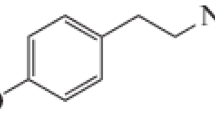Abstract
Potato leafroll virus (PLRV) was purified fromPhysalis floridana, applying freezing, low-speed centrifuging, ammonium sulphate precipitation, clarification with chloroform and butanol, ultracentrifuging and sucrose-gradient centrifuging. Three antisera with titers from 64 to 256 were prepared, one of them being sufficiently specific to be used in the enzyme-linked immunosorbent assay (ELISA).
With this test PLRV could be detected reliably in the foliage of secondarily infected, glasshouse-grown potato plants of six cultivars tested, and in sprouts of four or five of them. The results indicate that ELISA may be used successfully for routine testing of foliage of glasshouse-grown potato plants.
Samenvatting
Aardappelbladrol, veroorzaakt door het aardappelbladrolvirus (PLRV) is reeds meer dan een eeuw in Europa bekend en is in veel landen vermoedelijk nog steeds de ernstigste virusziekte van de aardappel. De bestrijding wordt ernstig bemoeilijkt door het ontbreken van een betrouwbare toetsmethode. De callosetoets heeft als routinetoets voor het aantonen van PLRV in knollen op beperkte schaal ingang gevonden, maar is niet 100% betrouwbaar.
Sinds kort is voor virussen een zeer gevoelige serologische methode beschikbaar gekonen, de ‘enzyme-linked immunosorbent assay’ (ELISA). Hierbij wordt het virus in plantemateriaal aangetoond door middel van een enzymreactie, waarvan de kleuromslag met het blote oog of (bij voorkeur) met een fotometer wordt afgelezen. De uitslag van de fotometer (extinctie) is een aanduiding voor de aanwezigheid van het virus. De methode lijkt bruikbaar voor routinematige toepassing. Om de bruikbaarheid voor het aardappelbladrolvirus te onderzoeken werd dit virus gezuiverd, werden antisera bereid en werden loof en spruiten van bladrolvirusvrije en-zieke aardappels onderzocht.
Bij de viruszuivering uitPhysalis floridana, werd gebruik gemaakt van bevriezing, precipitatie door middel van ammoniumsulfaat, klaring met chloroform en butanol, centrifugering bij laag en hoog toerental en suikergradiëntcentrifugering. Met de viruspreparaten werden drie konijnen geïnjiceerd. De verkregen antisera bereikten titers van 64 tot 256 in de micro-precipitatietoets (Tabel 2). Eén hierven (B) was voldoende specifiek om in ELISA gebruikt te worden.
Toetsingen werden uitgevoerd met blad van in een kas opgekweekte bladrolvrije en secundair geïnfecteerde aardappelplanten en met in het donker gekweekte spruiten. Tabel 1 geeft een overzicht van de getoetste rassen, de aantallen knollen, die ter kieming waren weggelegd en waarvan telkens één oog in de kas werd uitgeplant, en van de virussen waarmee ze geïnfecteerd waren. De resultaten van de toetsingen, weergegeven in de Tabellen 3 en 4, laten zien, dat het bladrolvirus betrouwbaar kan worden aangetoond in het blad van alle zes cultivars, maar in de spruiten van slechts vier of vijf, nl. Bintje, Element, Ostara, Resy en mogelijk Désirée. ELISA kan derhalve goed worden gebruikt voor het aantonen van het bladrolvirus in blad van secundair geïnfecteerde kasplanten. Of dit ook geldt voor veldplanten moet nog worden onderzocht.
ELISA zal voor de Nederlandse pootgoedteelt het meest waardevol zijn wanneer met deze toets het virus in vers gerooide, slapende knollen kan worden aangetoond (nacontrole). Helaas waren zulke knollen niet beschikbaar toen we onze proeven met blad en spruiten uitvoerden.
Similar content being viewed by others
References
Bode, O., 1962. Die Blattrollkrankheit der Kartoffel. Die durch die Virose bei der Kartoffel hervorgerufenen Veränderungen und die Möglichkeiten des Nachweises. Angew. Bot. 36: 86–116.
Bokx, J. A. de, 1967. The callose test for the detection of leafroll virus in potato tubers. Eur. Potato J. 10: 221–234.
Casper, R., 1977. Detection of potato leafroll virus in potato and inPhysalis floridana by enzyme-linked immunosorbent assay (ELISA). Phytopath. Z. 90: 364–368.
Clark, M. F. & Adams, A. N., 1977. Characteristics of the microplate method of enzyme-linked immunosorbent assay for the detection of plant viruses. J. gen. Virol. 34: 475–483.
Kojima, M., Shikata, E., Sugawara, M. & Murayama, D., 1969. Purification and electron microscopy of potato leafroll virus. Virology 39: 162–174.
Kojima, M. & Murayama, D., 1972. An attempt to prepare antiserum against potato leaf-roll virus. Ann. phytopath. Soc. Japan 38: 255–257.
McNaughton, P. & Matthews, R. E. F., 1971. Sedimentation of small viruses at very low concentrations. Virology 45: 1–9.
Murayama, D. & Kojima, M., 1974. Antigenicity of potato leafroll virus. Proc. Japan Acad. 50: 322–327.
Peters, D., 1967a. The purification of potato leafroll virus from its vectorMyzus persicae. Virology 31: 46–54.
Peters, D., 1967b. Potato leafroll virus, its purification from its vectorMyzus persicae. Meded. L. E. B. Fonds No. 45. H. Veenman & Zonen, Wageningen, the Netherlands.
Sarkar, S., 1975. A rapid electron microscopic diagnosis of potato leafroll virus. Potato Res. 18: 227–236.
Sarkar, S., 1976. Potato leafroll virus contains a double-stranded DNA. Virology 70: 265–273.
Author information
Authors and Affiliations
Rights and permissions
About this article
Cite this article
Maat, D.Z., de Bokx, J.A. Potato leafroll virus: antiserum preparation and detection in potato leaves and sprouts with the enzyme-linked immunosorbent assay (ELISA). Netherlands Journal of Plant Pathology 84, 149–156 (1978). https://doi.org/10.1007/BF01976303
Accepted:
Issue Date:
DOI: https://doi.org/10.1007/BF01976303




